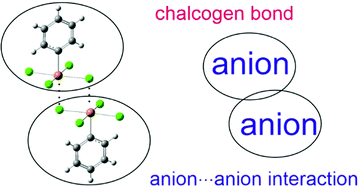Anion⋯anion interaction within Ch(CH3)X4− (Ch = S, Se, Te; X = Cl, Br, I) dimers stabilized by chalcogen bonds†
Abstract
In a crystal, a pair of homoanions (Te(C6H5)Cl4−) are arranged in a parallel manner, close enough to interact with each other. Quantum chemical analysis indicates the existence of two strong noncovalent chalcogen bonds engaging the σ-hole of the chalcogen atoms from one unit and electron density accumulated on the Cl atom of the neighboring unit. In a solid, chalcogen bonds are supported by a multitude of HBs between interacting (Te(C6H5)Cl4−) anions and the C5H5NBr+ counterions. These studies are extended to the model homodimers [(Ch(CH3)X4)−]2, where Ch represents an atom of group 16 (S, Se, and Te) while X = Cl, Br, and I. In these model systems, the aromatic ring was replaced by a methyl group and the counterions were not included. The consequence of this is a different noncovalent bond network in comparison to the system in a solid (the absence of intermolecular HBs and the presence of dihalogen bonds). The tendency for more exoenergetic complexation increases in the Cl < Br < I series. The chalcogen size effect is much smaller. However, critical to the stability of this system is overcoming the Coulomb repulsion between the two monoanions. This is possible because of the polarizable environment that exists in the crystal due to the presence of counter ions.

- This article is part of the themed collection: 2022 PCCP HOT Articles


 Please wait while we load your content...
Please wait while we load your content...